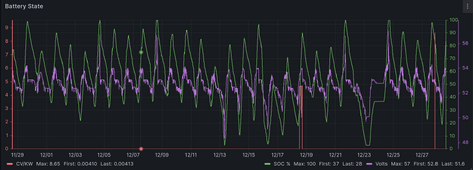Sorry but I am going to be terribly BLUNT on this.
Far too many battery pack sellers will use the ALLOWABLE VOLTAGE range in their specs which is terribly wrong... Even with perfectly matched cells, stuff WILL get awry past the working curve. This is just the way it is.
Nominal Cell Voltage is ALWAYS STATED AT 3.200 Volts for Standard LFP. Dead Centre of the Working Range which is 3.000-3.400 YES that Very Flat voltage curve. IF Nominal Voltage was stated as 3.075 that would put it dead centre of 2.500-3.650.
EVE, CATL, LISHEN and all the others producing Standard LFP, test & validate the cells to deliver their stated AH from the WORKING RANGE and not the allowable.
Confusion Source: quite often, "shifty" vendors flogging great market cells will say they are rating the cells from testing BUT from 3.650 down to 2.50. Customer get's them, charged to 3.450 and tests to 3.000 and get's "maybe" 80% of spec'd AH. It's happened a LOT and a lot of folks here have hit that... Again why some of us tell folks to get A-Grade Matched & Batched with Factory Reports only.
Finally, we have people here using every conceivable "assembled retail battery" out there pretty much (for this class of gear). A great many have just followed the "label" charging to 3.65 etc etc... They hit problems, we troubleshoot, they finally get to reasonable, proper conservative charging profiles and POOFDAH the Problems go away... time & time & time again... BTW: it gets exhausting !
There are links in my signature & several TECH threads I've written over the years for folks here... Have at it and Good Luck.



